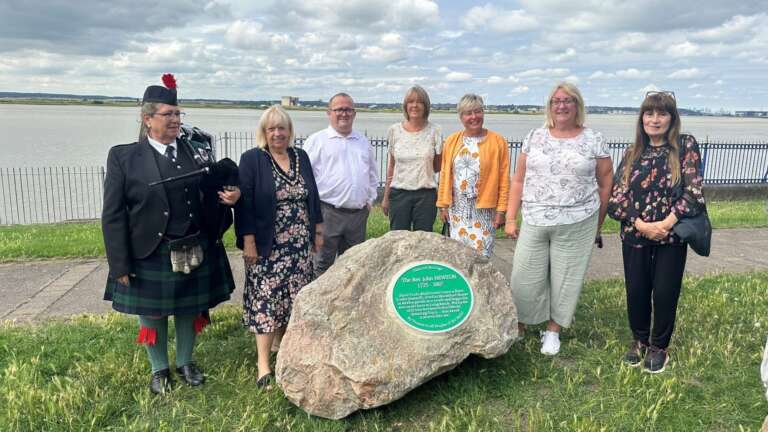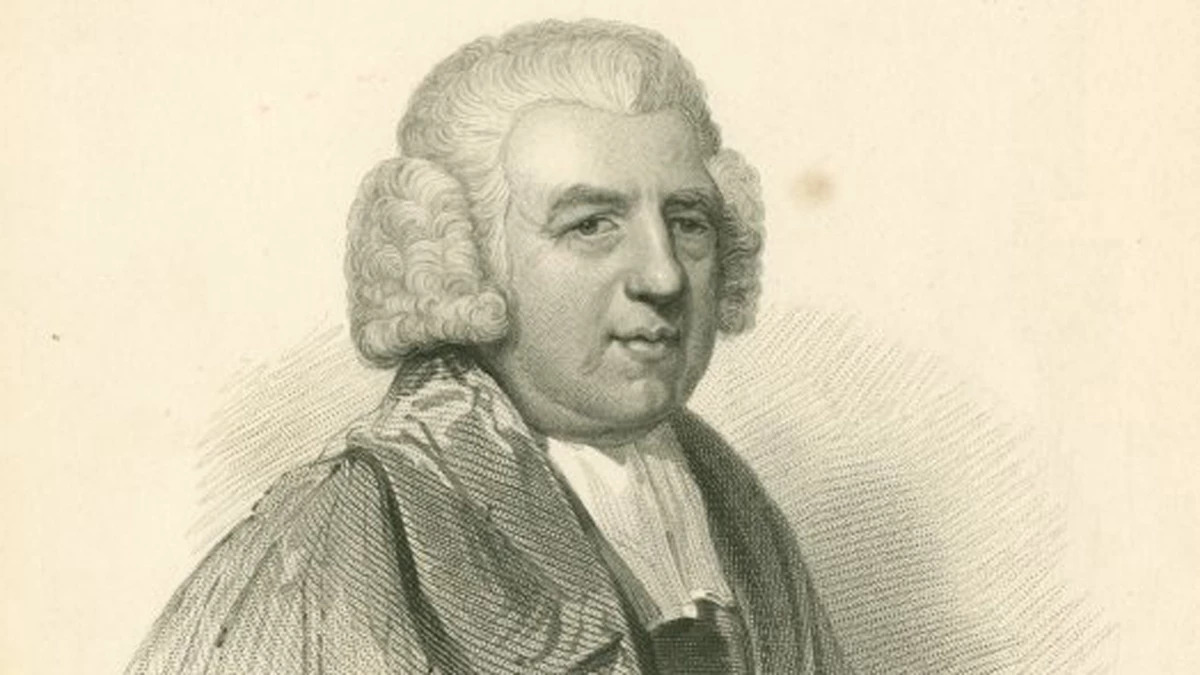CED Stone Support Local Community with John Newton Plaque in Purfleet

Post date: 23 Jul, 2024
Saturday
saw the 'eventual' unveiling of a plaque celebrating John Newton,
best known for being the author of the hymn Amazing Grace, and his
connection to the Purfleet-on-Thames area. Over a decade ago, the
Thurrock Council supported and paid for several green plaques around
the borough to commemorate historical figures with a local
connection. The John Newton plaque was one of them, unfortunately,
the plaque was never installed.

Trevor
Batchelor, vice chair of the Purfleet on Thames Community Forum
explains,
The
John Newton plaque was originally unveiled in 2012. The plaque was
to be fixed to the children's centre building at Purfleet on Thames,
but as it is a conservation area, conservation consent was required
to affix it. There was an objection, and unfortunately, the plaque
was never installed. Many years later, I found the plaque hidden on
a shelf in Thurrock Museum and arranged with CED Stone's help to get
the plaque permanently displayed.
Being
local to our West Thurrock Depot, Manager, David Smith was happy to
help Trevor out, donating a rock for the plaque to be fixed to.
Trevor
tells us of the unveiling,
It
was a great day, and there were many favourable comments. I gave CED
Stone a big thank you in my speech and meant it. Now the plaque is
attached, it will be a feature on the riverfront for many years to
come.

Thanks to Trevor Batchelor, vice chair of the Purfleet on Thames Community Forum for providing this timeline of
The varied life of John Newton from bad to good

1725 - Born
in Wapping.
1732 - John's
mother died when he was 7 years old.
1733
- John was sent to a boarding school in Stratford &and his
father re-married.
1734
- The family moved to Marshfoot House, in Purfleet.
1736
- John started his life at sea here at Long Reach, Purfleet, by
joining his father, when he was 11 years old.
1743
- John was press-ganged into the Navy and given the rank of
midshipman. He hated it and tried to desert. He was caught, received
96 lashes and demoted to common seaman. He did not get on with the
crew and it was rumoured that he planned to murder the captain. Later
he was transferred to a slave ship bound for West Africa.
1745
- John
arrived
in Sierra Leone and was kept captive by his slave trading master, who
gave him to his wife by
whom John was badly
treated and abused. He described this period of his life in words
that he wrote “once
and infidel and a libertine now a servant of slaves in West Africa.”
These
words are on his grave.
1747
- John was found by a sea faring friend of his father and returned
to England. On the way back the ship was caught in a dreadful storm
off Donegal, Ireland, the ship became damaged, holed. Newton prayed
for the mercy from God. The load shifted and blocked the hole and the
pumps kept the ship afloat. The storm subsided and the ship, the
‘Greyhound’ limped into port.
After
this, his 3rd
near death experience, John started to experience a religious
awakening.
His
1st was when as a youngster he was thrown from his horse landing
very close to a large spike which would
certainly have killed him if he were thrown just a little further.
His
2nd was here at Purfleet, as it was: he was due to meet his friends
to visit a ship in the river. He arrived late and saw his friends
rowing out to the ship. The boat struck an underwater obstruction and
sank with the loss of life of all onboard.
1748
- John still needed an income and worked on a slaving ship. It was
during that year his faith started to return.
1750
- John
married
Mary Catlett at Rochester and became master of a slaving ship until
he
suffered
a stroke.
1755
- A friend of his father helped him gain employment as a tax
collector or tide surveyor, depending who you believe, in the Port of
Liverpool.
1757
- By now John had committed himself to entering the ministry and
began studying for the priesthood.
1764
- He became ordained as a church minister, curate of Olney in
Buckinghamshire.
John
wrote many hymns, over 300 some with a poet he met William Cowper.
1772
- John wrote the words for ‘Amazing Grace’ which has become
the World’s most recognised hymn.
John
had turned his life around from a slaver to slave abolitionist. He
met William Wilberforce MP
and
persuaded him to remain in parliament to campaign against slavery.
1787
- He
helped Wilberforce found the Society for effecting the abolition of
the slave trade and campaigned for this for the rest of his life
1807
- He
finally saw the Act for the Abolition of the Slave Trade come into
force in February 1807.
He died in December that year.